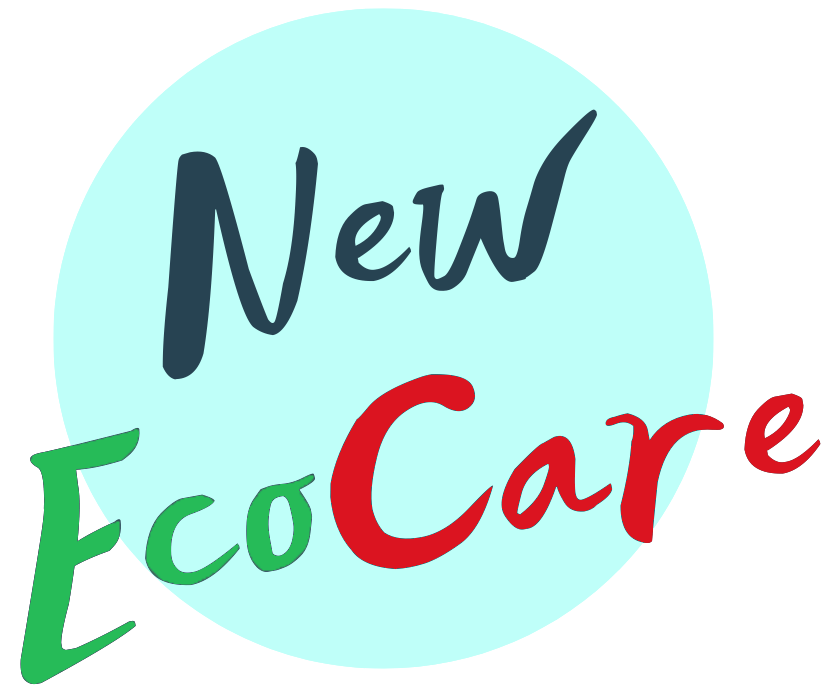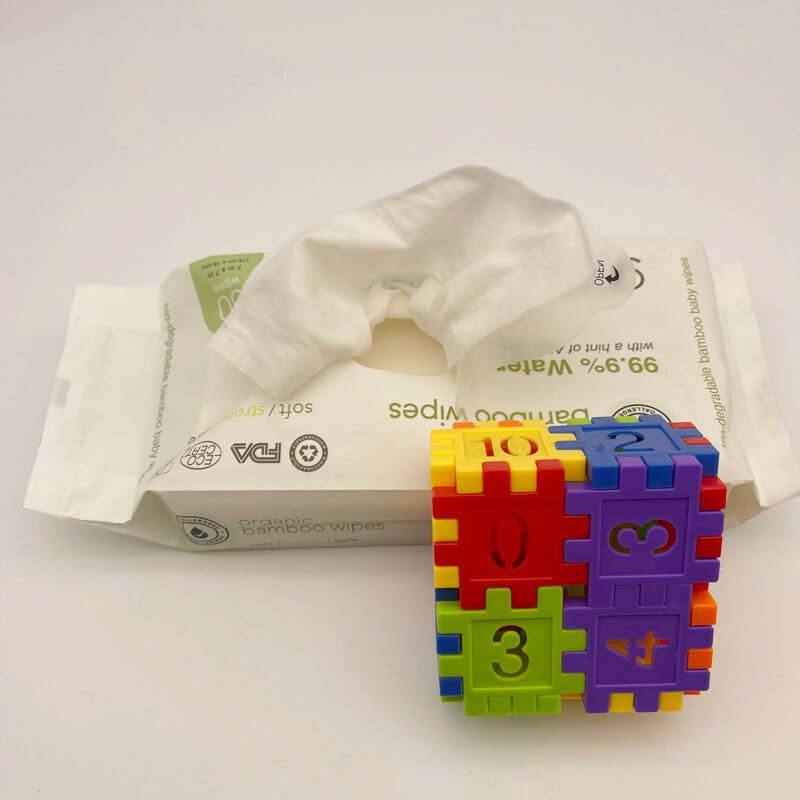Les lingettes humides sont incroyablement pratiques pour le nettoyage quotidien et l'hygiène personnelle, mais leur élimination est un problème environnemental important qui mérite qu'on s'y intéresse. Des pratiques d'élimination inadéquates entraînent de graves conséquences telles que l'engorgement des systèmes d'égouts, la pollution de l'environnement et les dommages causés à la faune et à la flore. Il est impératif que les utilisateurs comprennent la nécessité de se débarrasser correctement des lingettes humides afin de minimiser leur empreinte écologique.
Les lingettes humides sont souvent fabriquées à partir de matériaux qui ne se décomposent pas facilement dans les environnements naturels ou les systèmes d'égouts. Cela peut conduire à la formation de bouchons dans les canalisations d'égout, communément appelés "fatbergs", qui sont coûteux et difficiles à gérer pour les municipalités. De plus, lorsque les lingettes humides se retrouvent dans des plans d'eau naturels, elles constituent une menace pour la vie marine et contribuent au problème croissant des débris marins. En comprenant l'impact environnemental d'une élimination incorrecte, les individus peuvent prendre des décisions plus éclairées et adopter de meilleures habitudes d'élimination.
Types de lingettes humides
Lingettes jetables ou non jetables
Dans le monde des lingettes humides, les produits sont généralement divisés en catégories "jetables" et "non jetables". Cependant, le terme "jetable" peut souvent être trompeur, car de nombreux produits étiquetés de la sorte ne se désintègrent pas aussi facilement que le papier hygiénique et peuvent encore contribuer à des blocages et à des dommages environnementaux. Cette section examine ce qui différencie ces deux catégories et les implications de leur élimination.
Les lingettes "jetables" sont conçues pour se décomposer plus rapidement que les lingettes non jetables dans l'eau. Toutefois, le processus de décomposition n'est pas immédiat et dépend fortement des conditions spécifiques des systèmes d'égouts locaux. Les lingettes non jetables, quant à elles, sont fabriquées à partir de matériaux plus robustes destinés à un nettoyage plus intensif, mais contribuent de manière significative à l'obstruction des égouts lorsqu'elles sont jetées dans l'eau. Comprendre ces différences permet de décider en connaissance de cause s'il faut jeter les lingettes dans les égouts ou les jeter à la poubelle.
Lingettes humides biodégradables : Un examen plus approfondi
Les lingettes humides biodégradables sont présentées comme une option plus respectueuse de l'environnement, conçue pour se décomposer plus rapidement que leurs homologues traditionnels. Ces lingettes sont fabriquées à partir de fibres végétales naturelles qui sont censées se décomposer après avoir été jetées dans un environnement de compostage. Toutefois, l'efficacité et la fonctionnalité réelle des options biodégradables varient considérablement.
Cette sous-section examine les matériaux utilisés dans les lingettes biodégradables, la comparaison avec les lingettes ordinaires en termes d'impact sur l'environnement et la question de savoir si ces lingettes sont à la hauteur de ce qu'elles affirment. Il est essentiel que les consommateurs comprennent ces facteurs pour faire des choix écologiques qui correspondent à leurs valeurs et aux besoins de leurs communautés.
Pratiques actuelles d'élimination
Comment les gens se débarrassent-ils généralement des lingettes humides ?
Malgré les informations disponibles, de nombreuses personnes continuent à se débarrasser des lingettes humides en les jetant dans les toilettes. Cette habitude est due à la commodité et à l'idée fausse largement répandue que toutes les lingettes humides peuvent être jetées dans les toilettes. Cette section traite des pratiques d'élimination courantes dans différentes régions et de leur impact sur les systèmes d'assainissement locaux.
L'utilisation de lingettes humides non jetables est particulièrement problématique. Ces lingettes ne se désintègrent pas comme le papier hygiénique et peuvent se combiner avec des graisses, des huiles et d'autres matières non biodégradables dans le réseau d'égouts pour former d'importants bouchons. Ces problèmes ne sont pas seulement une nuisance, ils nécessitent également des ressources financières importantes pour les résoudre, ce qui accroît la charge des collectivités locales et des contribuables.
Les problèmes posés par les méthodes d'élimination actuelles
Les problèmes les plus importants posés par les méthodes actuelles d'élimination des lingettes humides sont la formation de bouchons dans les systèmes de plomberie domestiques et municipaux, l'accumulation de déchets non dégradables dans l'environnement et les efforts considérables de nettoyage nécessaires. Cette sous-section met en évidence les défis techniques, financiers et environnementaux posés par l'élimination incorrecte des lingettes humides.
En jetant des lingettes humides, les consommateurs contribuent à un cycle plus large de déchets et de pollution qui affecte les infrastructures urbaines et les écosystèmes naturels. Cette section vise à sensibiliser aux conséquences de ces actions et à encourager les utilisateurs à adopter des pratiques d'élimination plus responsables.
Ces premières sections de l'article ouvrent la voie à la compréhension de l'importance des techniques d'élimination des lingettes humides, à l'exploration des impacts environnementaux et à l'examen des conséquences des pratiques actuelles. Elles fournissent aux lecteurs des informations essentielles pour commencer à faire des choix plus durables dans leur vie quotidienne.
Méthodes d'élimination appropriées
Guide étape par étape pour l'élimination des lingettes non lavables
Les lingettes non lavables doivent être jetées à la poubelle afin d'éviter que les réseaux d'égouts ne se bouchent. Ce guide décrit les étapes à suivre pour s'en débarrasser de manière responsable :
- A utiliser avec parcimonie : Réduire l'utilisation de lingettes non lavables dans la mesure du possible.
- Séparer les déchets : Prévoir une poubelle pour les lingettes non lavables afin d'éviter les jets accidentels.
- Éduquer les membres du ménage : Veillez à ce que tous les membres de votre foyer comprennent l'importance de ne pas jeter ces lingettes dans les toilettes.
Bonnes pratiques pour les lingettes jetables
Bien que certaines lingettes soient commercialisées comme pouvant être rincées, il est essentiel de les utiliser judicieusement afin de minimiser les dommages potentiels :
- Suivre les directives du fabricant : N'utilisez que des lingettes clairement identifiées comme jetables et dans les quantités recommandées par le fabricant.
- Connaître les capacités du système d'assainissement local : Certains systèmes municipaux sont mieux équipés que d'autres pour traiter les lingettes jetables.
Impact sur l'environnement
Les effets à long terme d'une élimination incorrecte
L'élimination inappropriée des lingettes humides entraîne une dégradation de l'environnement, notamment des dommages à la faune et à la flore et des problèmes de qualité de l'eau. Les matériaux non dégradables peuvent persister dans les écosystèmes pendant des années, menaçant ainsi la vie marine et terrestre.
Études de cas : Les conséquences dans les zones urbaines
Les zones urbaines sont souvent confrontées à des problèmes importants liés à l'élimination inappropriée des lingettes, notamment l'augmentation des coûts d'entretien des systèmes d'égouts publics et l'impact sur la faune et la flore locales. Cette section examine des cas spécifiques où les villes ont dû faire face à ces problèmes, illustrant l'impact généralisé d'erreurs courantes en matière d'élimination.
Alternatives aux lingettes humides traditionnelles
Alternatives écologiques
Il existe des alternatives viables aux lingettes humides traditionnelles qui offrent la même commodité sans le coût environnemental. Des produits tels que les lingettes biodégradables fabriquées à partir de fibres naturelles, les chiffons réutilisables et même les innovations en matière de produits d'hygiène personnelle respectueux de l'environnement peuvent réduire considérablement les déchets.
Comment fabriquer des lingettes humides maison
Créer ses propres lingettes humides à la maison est une option durable. Des ingrédients simples tels que des serviettes en papier, de l'eau et une solution nettoyante douce peuvent être utilisés pour fabriquer des lingettes nettoyantes efficaces sans les produits chimiques et plastiques agressifs que l'on trouve dans les produits commerciaux.
Ces sections fournissent des conseils pratiques et des alternatives pour réduire l'impact environnemental de l'utilisation des lingettes humides. Elles encouragent les lecteurs à adopter des habitudes plus durables et à considérer les implications plus larges de leurs choix quotidiens.
Règlements et lignes directrices
Réglementation locale en matière d'élimination
Il est essentiel de comprendre et de respecter les réglementations locales en matière d'élimination pour minimiser l'impact des lingettes humides sur l'environnement. De nombreuses municipalités ont des directives spécifiques sur ce qui peut ou ne peut pas être jeté, afin de protéger les réseaux d'égouts locaux contre les blocages causés par des matériaux non dégradables tels que les lingettes humides.
Normes mondiales pour l'élimination des lingettes humides
Au niveau international, des efforts sont déployés pour normaliser l'élimination des lingettes humides afin de remédier à leur impact sur l'environnement à l'échelle mondiale. Ces normes encouragent souvent la production et l'utilisation de lingettes véritablement jetables et biodégradables et visent à sensibiliser le public à l'importance de pratiques d'élimination appropriées.
Comment se débarrasser des lingettes humides
Il est essentiel d'encourager les bonnes habitudes d'élimination pour réduire l'impact négatif des lingettes humides sur l'environnement. Cette section fournit des conseils pratiques :
- Ne pas jeter les lingettes non lavables dans les toilettes : Jetez-les toujours à la poubelle.
- Vérifier les réglementations locales : Tenez compte des directives locales concernant l'élimination des déchets et suivez-les.
- Éduquer les autres : Partagez des informations sur l'élimination correcte des lingettes au sein de votre communauté afin d'encourager de meilleures pratiques.
Conclusion
L'élimination correcte des lingettes humides n'est pas seulement une responsabilité personnelle, mais une nécessité mondiale. En choisissant en connaissance de cause les produits que nous utilisons et la manière dont nous les éliminons, nous pouvons réduire de manière significative notre empreinte écologique. N'oubliez pas que chaque petit geste compte dans notre effort collectif pour protéger et préserver notre planète.

